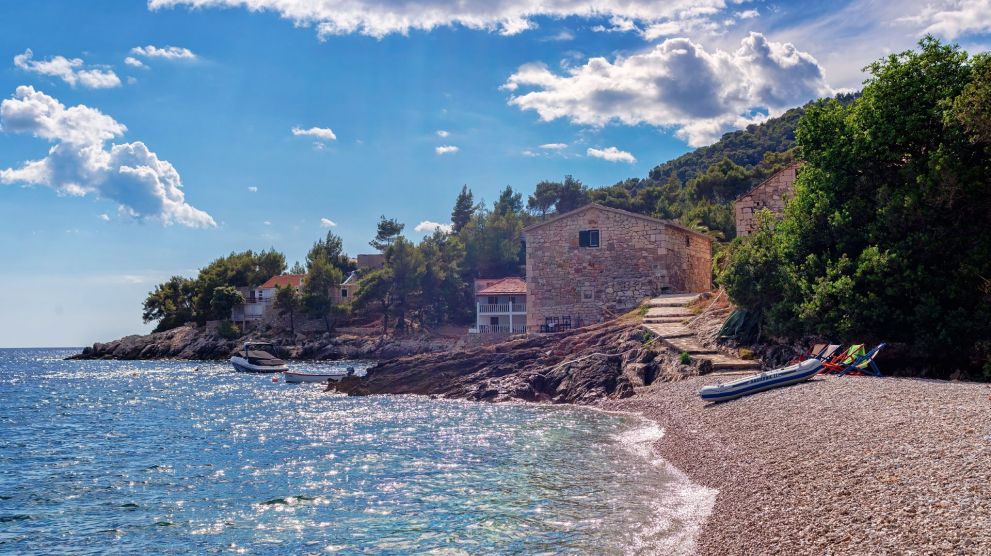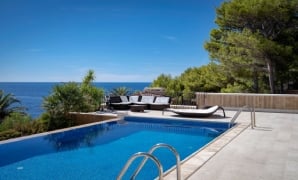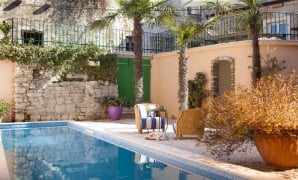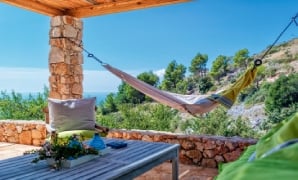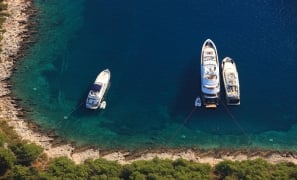Get Away from the Crowds
Tourism on the island is heavily focused on the western side of Hvar, which leaves Eastern Hvar much less discovered and blissfully free of the crowds during the season. It is arguably the most beautiful part of the island, but little is known about it by most visitors.
Here are 10 things to know about the island east of Jelsa...
1. It is home to the oldest olive tree in Croatia, dating back some 2,500 years. Pop in for some excellent honey or olive oil at the Rubin mill in Zastrazisce for more information, and maybe even a complimentary visit can be arranged.
2. The same village is home to the only freshwater carp in all Dalmatia. Drop in for a beer at Karmelino's in Zastrazisce to learn more from the man responsible.
3. The largest vineyard on a Mediterranean island can be found in eastern Hvar, high above the villages of Poljica and Zastrazisce, an astonishing 470 hectares in all.
4. This is not the only wine heritage eastern Hvar can boast. The family of one of New Zealand's most famous winemakers, Sir George Fistonich, comes from Zastrazisce.
5. One of Hvar's least visited - and most interesting attractions - is located in eastern Hvar. The Neolithic cave of Grapceva Spilja is home to evidence of human inhabitation on Hvar long before the arrival of the Ancient Greeks.
6. Eastern Hvar offers some of the island's top rock climbing, in the form of the sheer cliffs of Vela Stiniva, an idyllic bay on Hvar's northern shore, which is well worth a visit, even if you are not a rock climber. And then visit its smaller sister, Mala Stiniva, and fall in love all over again.
7. Eastern Hvar has some of the best beaches on the island, and some of the most deserted. The Gdinj Bays are probably the most popular and well-known, but there are many idyllic bays at the end of dirt tracks which you can have to yourself. Some of them have exclusive villas which are truly in isolated paradise. At Villas Hvar, we know where they are and how to book them, so talk to us...
8. One of the island's top accommodation units is located in eastern Hvar, but is sadly a shadow of its former self. The Beogradske Odmaraliste just east of Jelsa used to be a slice of Hvar paradise for its 400 temporary guests and worked all year, until the Homeland War broke out. An Olympic-size swimming pool and one of Hvar's top bays were just some of the attractions before the hotel fell into disrepair due to war and disputed ownership between Croatia and Serbia. Progress has been made, and fingers are crossed that this wonderful building may be restored to its former glory. Talk a walk around, but be careful as there is lots of broken glass.
9. Eastern Hvar is home to Dalmatia's number one ethno-eco village, called Humac. Think Hvar is a party island? Take the time to wander the abandoned paths of this stunning and abandoned shepherd's village. Not quite so abandoned these days, however, as a wonderful restaurant, small museum and some rustic accommodation are all now features of Humac. It is hypnotic. Don't miss the Eco-Ethno Humac Festival in July.
10. Girls from the eastern village of Bogomolje are called Bogomoljka, which is also the same word in Croatian for the Praying Mantis spider. Ask any male Praying Mantis for advice on that one... You have been warned.
Eastern Hvar is a fantastic place to visit, with some truly fabulous villas away from the crowds. Just ask us for more information!
*Author - Paul Bradbury
*Photo Credit - Rafael Janic Photography
